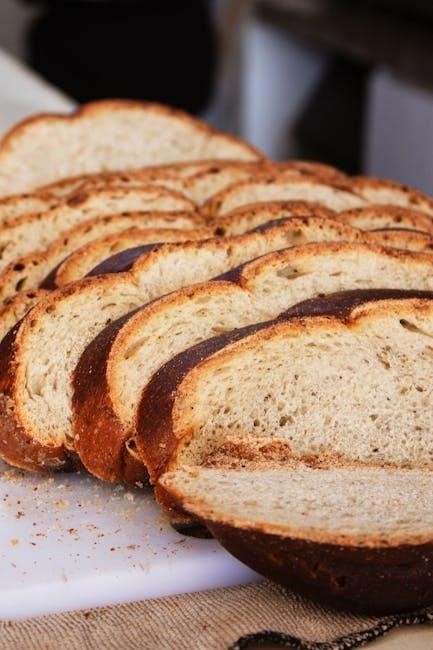Sight words are high-frequency words that appear frequently in reading materials. Mastering these words helps students recognize them instantly, boosting reading fluency and confidence. Second-grade sight words, often provided in PDF formats, include lists like Dolch and Fry, offering essential tools for early literacy development. These resources are invaluable for parents and educators aiming to support young learners.
Importance of Sight Words in Reading Development
Sight words are foundational for early reading development, as they are high-frequency words that appear regularly in texts. Unlike phonetically regular words, many sight words don’t follow predictable spelling patterns, making memorization essential. Recognizing these words instantly improves reading fluency, comprehension, and confidence. For second graders, mastering sight words bridges the gap from learning to read to reading to learn, enabling them to focus on understanding complex sentences and stories. These words are often the building blocks of reading curricula, ensuring students can decode and interpret texts more efficiently. Their mastery is a critical milestone in literacy growth and academic success.

Dolch Sight Word List for 2nd Grade
The Dolch Sight Word List for 2nd Grade includes 46 high-frequency words essential for early literacy. These words, often irregularly spelled, are organized to aid memorization and recognition, fostering fluent reading skills in young learners.
Overview of the Dolch 220 Second Grade Words
The Dolch 220 Sight Words are a foundational list of high-frequency words that appear regularly in children’s reading materials. For second grade, the list includes 46 essential words like “always,” “around,” and “because,” which are crucial for early literacy development. These words are often irregularly spelled and must be recognized by sight rather than sounded out. Organized alphabetically, they provide a clear structure for memorization. The Dolch list is widely used in educational settings and is available in PDF formats for easy printing and reference. Mastering these words significantly enhances reading fluency and comprehension skills in young learners.
Complete List of 46 Sight Words

The complete list of 46 Dolch sight words for second grade includes high-frequency words such as always, around, because, been, before, best, both, buy, call, cold, does, don’t, fast, first, five, found, gave, goes, green, its, made, many, off, or, pull, read, right, sing, sit, sleep, tell, their, these, those, upon, us, use, very, wash, which, why, wish, work, would, write, your. These words are fundamental for early reading development and are available in PDF format for easy practice and reference. Regular practice with these words helps students recognize them instantly, improving reading accuracy and confidence.

Fry Sight Word List for 2nd Grade
The Fry sight word list for 2nd grade includes high-frequency words like over, new, sound, take, only, little, work, know, place, years, live, me, back, give, most, very, after, things, our, just, name. These words are essential for building reading fluency and are often provided in PDF format for easy practice and reference. Regular practice with these words helps students recognize them instantly, improving reading accuracy and confidence.
Details of Fry’s First 200 High-Frequency Words
Fry’s First 200 high-frequency words are foundational for early readers, including second graders. These words, divided into two groups (1-100 and 101-200), are selected based on their frequency in written text. The first are more common, while the second 100 build on that foundation. Examples include over, new, sound, take, only, little, work, know, place, years, live, me, back, give, most, very, after, things, our, just, name. These words are crucial for fluent reading and are often provided in PDF format for easy practice. Regular use of these resources helps students master high-frequency words, enhancing their reading skills and confidence.
Second 100 Fry Sight Words (101-200)
The second 100 Fry sight words (101-200) build on the foundational skills established by the first 100. These words, such as over, new, sound, take, only, little, work, know, place, years, live, me, back, give, most, very, after, things, our, just, name, are slightly less frequent but still critical for reading proficiency. They often appear in everyday texts and are essential for recognition without decoding. Printable PDF lists of these words are widely available, offering convenient practice tools for students. Regular practice with these words reinforces reading fluency and comprehension, making them indispensable for second-grade learners.

Using 2nd Grade Sight Word PDFs
PDFs provide a convenient way to access and print sight word lists, worksheets, and games. These resources make practicing high-frequency words fun and engaging while tracking progress effectively.
How to Download and Print Sight Word Lists
Downloading and printing sight word lists is straightforward. Visit educational websites offering free PDFs for second-grade sight words. Look for options like the Dolch or Fry lists. Once downloaded, ensure your printer settings match the page size. Print the lists on sturdy paper for durability. Consider laminating them for reuse or creating flashcards for interactive practice. Many PDFs include preformatted layouts, making them easy to use. Ensure the text is clear and legible for your child or students. These printed resources are ideal for daily practice, quizzes, or as a quick reference guide to reinforce learning.
Practical Tips for Using Sight Word Worksheets
Using sight word worksheets effectively enhances learning. Start by introducing a few words at a time to avoid overwhelming the child. Use flashcards for quick recognition drills. Incorporate games like matching or scavenger hunts to make practice engaging. For PDF worksheets, print and use them in daily routines, such as morning work or homework. Encourage tracing and writing the words to improve retention. Reading sentences that include the words helps contextual understanding. Provide immediate feedback to correct mistakes and build confidence. Rotate activities regularly to keep the learning process fresh and exciting for the child.

Teaching Strategies for Sight Words

Engage students with flashcards, games, and interactive activities. Use sight word lists from PDFs to create practice drills. Incorporate words into sentences for context, ensuring repetition for retention.
Engaging Activities to Make Learning Fun
Make learning sight words enjoyable with interactive games and creative exercises. Use flashcards for quick recognition drills and incorporate sight words into bingo or scavenger hunts. Create word searches or crossword puzzles using PDF templates. Encourage students to write sight words in sand, shaving cream, or with sidewalk chalk for a hands-on experience. Sing songs or recite rhymes that include target words to enhance memory retention. Pair sight words with images or actions to create memorable associations. Use sight word worksheets and games from PDF resources to provide structured yet fun practice. These activities make learning sight words both effective and enjoyable for young students.
Integrating Sight Words into Daily Reading Practice
Incorporate sight words into daily reading to improve fluency and comprehension. Use PDF lists to identify high-frequency words in texts. Pre-teach sight words before reading to build familiarity. Pause during reading to highlight and discuss these words, reinforcing their recognition. Encourage students to point out sight words they encounter, making reading interactive. Create a “Word Wall” with sight words for frequent review. Incorporate sight words into reading games and activities, such as reading timed passages or playing “I Spy” with sight words. This consistent integration helps students apply their knowledge seamlessly during daily reading practice, enhancing their overall literacy skills.

Assessment and Progress Tracking
Regular practice is key to mastering sight words. Incorporate them into daily reading sessions by using PDF lists to identify high-frequency words in texts. Pre-teach sight words before reading to build familiarity and confidence. Pause during reading to highlight and discuss these words, reinforcing recognition. Encourage students to point out sight words they encounter, making the process interactive. Use flashcards or sight word games to reinforce learning. Create a “Word Wall” with key sight words for frequent review. Consistent integration helps students apply their knowledge seamlessly, improving fluency and comprehension in their daily reading practice.
Methods to Test Sight Word Mastery
To assess sight word mastery, use flashcards or PDF lists for quick recognition drills. Conduct timed readings to measure fluency and accuracy. Incorporate games like matching or memory games to make testing engaging. Use sight word sentences or phrases to evaluate contextual understanding. Implement oral reading assessments where students read aloud, allowing you to identify areas needing review. Create simple multiple-choice exercises or worksheets to reinforce recognition. Track progress through regular quizzes or checklists, ensuring students demonstrate consistent mastery. Utilize pre- and post-assessments to monitor improvement and adjust instruction accordingly. These methods provide comprehensive insight into a student’s sight word proficiency.
Tracking Progress with Sight Word Checklists
Using sight word checklists is an effective way to monitor student progress. These checklists, often available in PDF formats, allow teachers and parents to track mastery of each word. Checklists typically include all sight words for the grade level, with space to mark dates when words are learned. This tool helps identify areas needing review and celebrate achievements. Regularly updating the checklist provides a clear visual of growth over time. Many checklists are organized alphabetically or by learning sets, making it easy to reference and update. This method ensures consistent progress tracking and keeps students motivated to learn.

Additional Resources for Sight Word Practice
Find free printable sight word games, worksheets, and apps to make practice engaging. These resources provide interactive and fun ways to reinforce learning and retention of sight words.

Free Printable Sight Word Games and Worksheets
Enhance learning with free printable sight word games and worksheets designed for 2nd graders. These engaging resources include word searches, matching games, and flashcards to make practice fun. Many worksheets combine Dolch and Fry lists, offering comprehensive practice. Activities like tracing, coloring, and fill-in-the-blank exercises help reinforce recognition and spelling. Teachers and parents can use these materials to create interactive lessons or homework assignments. They are ideal for classroom use or home practice, ensuring consistency and progress in mastering high-frequency words. These tools are versatile, easy to download, and perfect for making sight word learning enjoyable and effective for young students.
Recommended Sight Word Apps and Tools
Several apps and tools are available to make sight word practice engaging and effective. Apps like Teach Your Monster to Read and Sight Words Pro offer interactive games and activities tailored for young learners. These tools provide flashcards, quizzes, and progress tracking, making learning fun and structured. Additionally, apps like Reading Bear and Sight Words & Phonics combine games with phonics lessons, reinforcing sight word recognition. Many of these tools are free or low-cost, making them accessible for parents and educators. They complement PDF resources by offering digital practice options, catering to different learning styles and preferences.
Mastering second-grade sight words is crucial for reading development. Utilize the provided PDFs and resources to enhance learning, ensuring a strong foundation for future academic success.
Final Thoughts on Mastering 2nd Grade Sight Words
Mastering second-grade sight words is a foundational step in reading development. These high-frequency words, available in convenient PDF formats, are essential for building fluency and confidence. By incorporating engaging activities, worksheets, and daily practice, students can achieve proficiency. Parents and educators should leverage these resources to create a supportive learning environment. Consistent practice and positive reinforcement will help students recognize and read sight words effortlessly, laying a strong foundation for future academic success. Embrace the journey of learning sight words with creativity and patience, ensuring your child becomes a confident and skilled reader.



